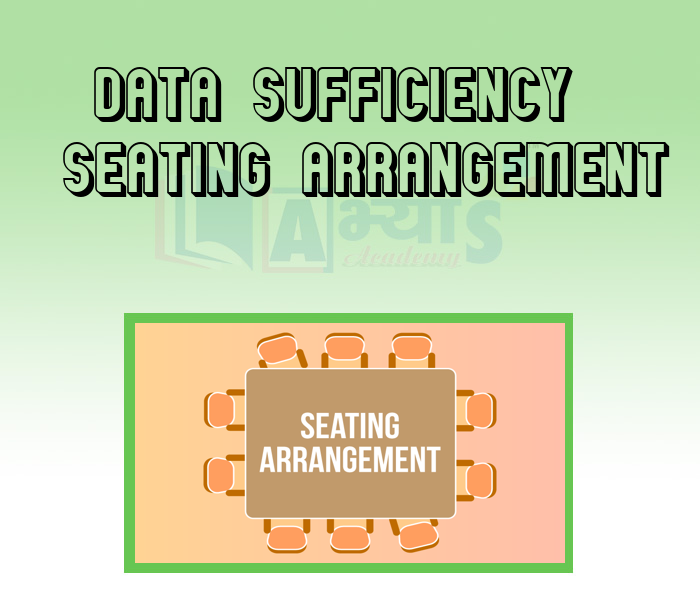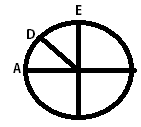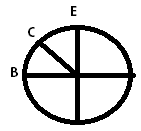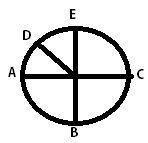Data Sufficiency Seating Arrangement












Data Sufficiency Seating Arrangement
The Data Sufficiency questions do not require the student to find the exact answer. Infact the only thing that a student is required to determine is that whether the statements provided in the question contain enough information for answering it.
You need to remember the steps involved in solving a particular Data Sufficiency question and follow them in this particular order: Check A (i.e. the first statement), then Check B (i.e. the second statement) and lastly, if required, combine the two statements to get the answer.
Data Sufficiency Involving Seating Arrangements:
The questions on seating arrangement with data sufficiency are regular feature of almost every competitive examination. In these questions, you have to arrange a group of persons fulfilling certain conditions. Here we can classify these problems into 4 types:
Direction : - Each of the questions below consists of a questionand two statements numbered I and II given below it. You have to decide whetherthe data provided in the statement are sufficient to answer the question.Read both the statements and give answer(a) if the data in statement I alone are sufficient to answer the question, while the data in statement II alone are not sufficient to answer the question;(b) if the data in statement II alone are sufficient to answer the question, while the data in statement I alone are not sufficient to answer the question;(c) if the data either in statement I alone or in statement II alone are sufficient to answer the question;(d) if the data given in both statements I and II together are not sufficient to answer the question; and(e) if the data in both statements I and II together are necessary to answer the question.
Question : - A, B, C, D and E are seated around a circular table facing at the centre. Who is to the immediate right of B ?
I. D is in between A and E.
II. C is in between B and E.
Answer (d) : - From I, we have : 
 .
.
From II, we have : 

Combining the above two, we have :

Thus, either A or C is to the immediate right of B.
The question below consists of a question and two statements numbered I and II given below it. You have to decide whether the data provided in the statements are sufficient to answer the question. Read both the statements and give answer Question : - A, B, C, D and E are sitting around a circular table facing the centre. Who is to the immediate left of C ? I. Only A is between E and B. II. D is to the immediate left of B. | |||
| Right Option : D | |||
| View Explanation |
In the following problems, there is one question and three statements I, II and III given below the question. You have to decide whether the data given in the statements is sufficient to answer the question. Read all the statements carefully and find which of the statements is/are sufficient to answer the given question. Choose the correct alternative in each question. Question : - Five persons - A, B, C, D and E are sitting in a row. Who s sitting in the middle ? I. B is between E and C. II. B is to the right of E. III. D is between A and E. | |||
| Right Option : D | |||
| View Explanation | |||
The problem below consists of a question and two statements numbered I and II given below it. You have to decide whether the data provided in the statement are sufficient to answer the question.Read both the statements and give answer : Question : A,B,C,D,E are sitting in a row facing north.Which of the following is at the right end ? I. A sits at the left end and sits third left of C. II. Immediate neighbour of C are B and E, but, D is not adjacent to B. | |||
| Right Option : D | |||
| View Explanation |
Students / Parents Reviews [20]
The experience was nice. I studied here for three years and saw a tremendous change in myself. I started liking subjects like English and SST which earlier I ran from. Extra knowledge gave me confidence to overcome competitive exams. One of the best institutes for secondary education.

Aman Kumar Shrivastava
10thAbhyas institute is one of the best coaching institute in the vicinity of Ambala Cantt area. The teachers of the institute are well experienced and very helpful in solving the problems of the students.The good thing of the institute is that it is providing extra classes for the students who are w...

Aman Kumar Shrivastava
10thAbhyas academy is great place to learn. I have learnt a lot here they have finished my fear of not answering.It has created a habit of self studying in me.The teachers here are very supportive and helpful. Earlier my maths and science was good but now it has been much better than before.

Barkha Arora
10thIt was good as the experience because as we had come here we had been improved in a such envirnment created here.Extra is taught which is beneficial for future.

Eshan Arora
8thAbhyas institute is one of the best coaching institute in the vicinity of Ambala cantt.The institute provides good and quality education to the students.The teachers are well experienced and are very helpful in solving the problems. The major advantages of the institute is extra classes for weak...

Shreya Shrivastava
8thMy experience was very good with Abhyas academy. I am studying here from 6th class and I am satisfied by its results in my life. I improved a lot here ahead of school syllabus.

Ayan Ghosh
8thBeing a parent, I saw my daughter improvement in her studies by seeing a good result in all day to day compititive exam TMO, NSO, IEO etc and as well as studies. I have got a fruitful result from my daughter.

Prisha Gupta
8thMy experience with Abhyas Academy has been very good. When I was not in Abhyas whenever teacher ask questions I could not speak it confidently but when I came in Abhyas, my speaking skills developed and now I am the first one to give the answer of teachers question.

Upmanyu Sharma
7thUsually we see institutes offering objective based learning which usually causes a lag behind in subjective examinations which is the pattern followed by schools. I think it is really a work of planning to make us students grab the advantages of modes of examination, Objective Subjective and Onli...

Anika Saxena
8thThird consective year,my ward is in Abhyas with nice experience of admin and transport support.Educational standard of the institute recumbent at satisfactory level. One thing would live to bring in notice that last year study books was distributed after half of the session was over,though study ...

Ayan Ghosh
8thIt was a good experience with Abhyas Academy. I even faced problems in starting but slowly and steadily overcomed. Especially reasoning classes helped me a lot.

Cheshta
10thWhen I have not joined Abhyas Academy, my skills of solving maths problems were not clear. But, after joining it, my skills have been developed and my concepts of science and SST are very well. I also came to know about other subjects such as vedic maths and reasoning.

Sharandeep Singh
7thAbhyas is good institution and a innovative institute also. It is a good platform of beginners.Due to Abhyas,he has got knoweledge about reasoning and confidence.My son has improved his vocabulary because of Abhyas.Teacher have very friendly atmosphere also.

Manish Kumar
10thAbhyas Methodology is very good. It is based on according to student and each child manages accordingly to its properly. Methodology has improved the abilities of students to shine them in future.

Manish Kumar
10thIt has a great methodology. Students here can get analysis to their test quickly.We can learn easily through PPTs and the testing methods are good. We know that where we have to practice

Barkha Arora
10thOne of the best institutes to develope a child interest in studies.Provides SST and English knowledge also unlike other institutes. Teachers are co operative and friendly online tests andPPT develope practical knowledge also.

Aman Kumar Shrivastava
10thAbhyas is an institute of high repute. Yogansh has taken admission last year. It creates abilities in child to prepare for competitive exams. Students are motivated by living prizes on basis of performance in Abhyas exams. He is satisfied with institute.

Yogansh Nyasi
7thAbout Abhyas metholodology the teachers are very nice and hardworking toward students.The Centre Head Mrs Anu Sethi is also a brilliant teacher.Abhyas has taught me how to overcome problems and has always taken my doubts and suppoeted me.

Shreya Shrivastava
8thI have spent a wonderful time in Abhyas academy. It has made my reasoning more apt, English more stronger and Maths an interesting subject for me. It has given me a habbit of self studying

Yatharthi Sharma
10thMy experience with Abhyas academy is very nice or it can be said wonderful. I have been studying here from seven class. I have been completing my journey of three years. I am tinking that I should join Abhyas Academy in tenth class as I am seeing much improvement in Maths and English
